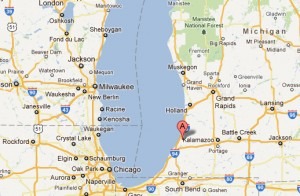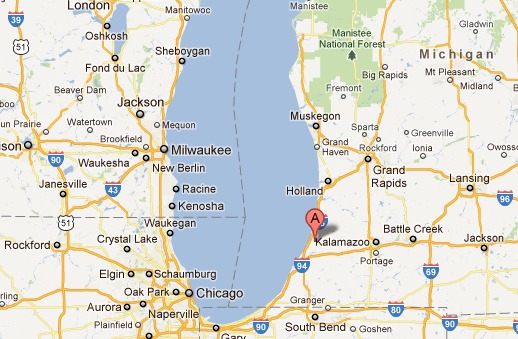
During the early part of the nineteenth century, American abolitionists fought slavery on several fronts. Leading activists gave speeches, wrote newspaper editorials and preached anti-slavery sermons. Others operated the Underground Railroad to shelter and transport runaway slaves. Still others left New England to build new communities — such as those in Oberlin, Ohio, Wayne County, Ind., and Salem, Iowa — where people of all races could live together.
In 1855, a handful of newly arrived Yankees founded a town in Michigan called “Deerfield,” but since it was one of many towns named “Deerfield” in the state, the town later changed its name to “Covert.” Historian Anna-Lisa Cox tells Covert’s inspiring tale in her 2006 book A Stronger Kinship: One Town’s Extraordinary Story of Hope and Faith, which is based on oral family histories, private diaries and other records. The book is now out in paperback.
Although Covert’s handful of founding families didn’t intentionally build an abolitionist town, per se, the inspiration for their new community came in part from the book of the prophet Isaiah, chapter four, verse six, which speaks of “a place of shelter and a refuge and hiding place” from the cultural and racial storms of the day. After its founding, Covert welcomed a mix of people, including a few Native Americans fleeing violence and resettlement. Over time it became home to both white and black settlers. By the mid-1860s, the town had a general store, churches and schools and totaled about 350 settlers.
Although integrated education was illegal in Michigan at that time, the Covert school board assigned no race to the black kids in the community, allowing them to go to school along with their white peers. As Cox describes it, through omission and understatement Covert’s town leadership carved out an oasis of acceptance for African-Americans in the midst of a cultural desert marked by discriminatory racial codes.
In Covert, blacks were allowed to vote. In fact, Civil War veteran William Conner, an upper middle class black farmer and landowner, was elected justice of the peace by the town’s mostly white voters. According to an online excerpt from the History of Berrien and Van Buren Counties, Michigan, Conner served his term in 1875.
While Covert maintained segregated fraternal orders, it integrated the town cemetery and the local Grand Army of the Republic. Perhaps most significantly, Covert’s cross-racial cooperation and integration in politics and place of residence survived generation after generation despite the arrival of new residents. Cox attributes Covert’s extraordinary record of racial integration and harmony lived out generations ahead of its time to what she calls “good intentions lived out on a daily basis.”
Covert never became a big or even medium-sized city, but it still exists today. To hear more about its story, listen to National Public Radio’s 2006 interview with Cox.


